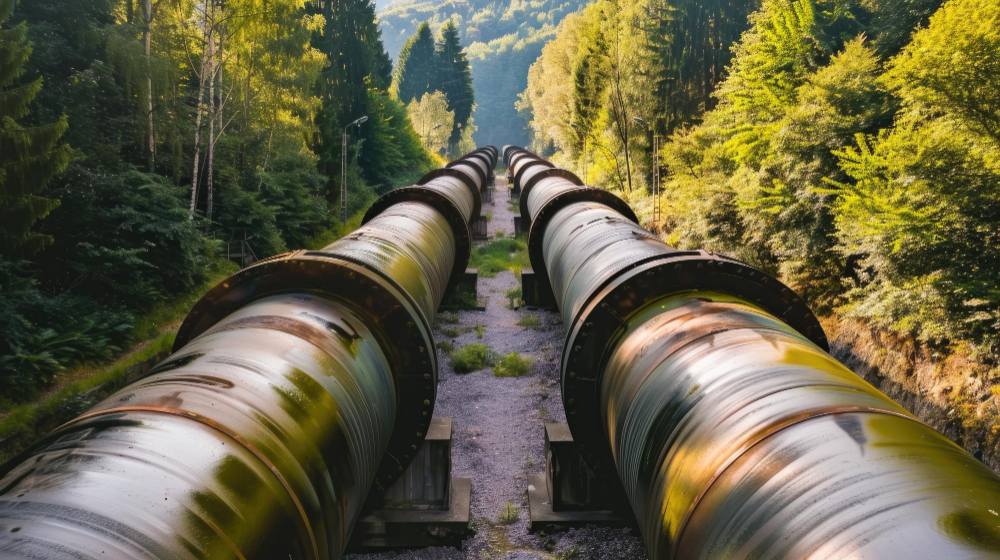On 1 January 2025, a major contract governing the transit of Russian gas through Ukraine will end, with significant implications for remaining Russian gas exports to some European Union countries. Despite the war in Ukraine, gas has continued to flow through a pipeline via the country and there has been no significant disruption to these gas supplies so far, even though Ukraine as part of its incursion into Russia’s Kursk region has taken control of the only active metering station for the entry of Russian gas to Ukraine, at Sudzha (Figure 1) (Łoskot-Strachota et al, 2024).
The end of the transit contract will mark an important shift because gas via Ukraine governed by the contract currently accounts for half of Russia’s remaining pipeline gas exports to the EU and a third of total Russian gas exports, including LNG (Table 1). The impact will be felt especially in Austria, Hungary and Slovakia, for which the Ukrainian transit route met 65 percent of gas demand in 2023 (IEA, 2024a). Overall, the share of Ukrainian transit in EU gas imports has dropped from 11 percent in 2021 to about 5 percent.
The EU has a non-binding goal of stopping all Russian gas imports by 2027 (European Commission, 2022). The end of Ukraine transit could speed up this decoupling, and would also imply a loss of $6.5 billion annually for Russia, unless it can redirect these flows to other pipelines or LNG terminals.
However, Ukraine stands to lose fees equivalent to about 0.5 percent of GDP from ending the transit contract and risks undermining its strategic role as an energy partner for Europe (for example, as a provider of gas storage). Moreover, Ukraine’s gas infrastructure, which is so far largely undamaged, could become a military target if Russian gas is no longer in Ukraine’s pipelines. While independent stress tests have confirmed the reliability of Ukraine’s gas infrastructure in extreme scenarios, including potential attacks, the risk of targeted attacks remains a serious concern, especially ahead of winter.
Furthermore, any stop to gas transit via Ukraine is opposed by Hungary, Slovakia and partially Austria for fear of disproportionate economic loses in such a scenario. To avoid higher prices and gas supply disruptions in 2025, those countries want to maintain some gas flows via Ukraine. They may fear that a stop now will end privileged access to Russian gas forever, potentially putting them at a competitive disadvantage relative to other EU countries.
In this context, we first set out some details of the current transit contact, and then discuss three scenarios:
- Scenario 1: Replacing Russian supplies to central-eastern Europe with LNG;
- Scenario 2: Replacing ‘Russian’ supplies with ‘Azeri’ gas via Ukrainian pipelines;
- Scenario 3: New type of gas agreement between the EU, Ukraine and Russia.
About the authors:
Ugnė Keliauskaitė is a Research Assistant in Energy and Climate at Bruegel.
Georg Zachmann is a Senior Fellow at Bruegel, where he has worked since 2009 on energy and climate policy.

